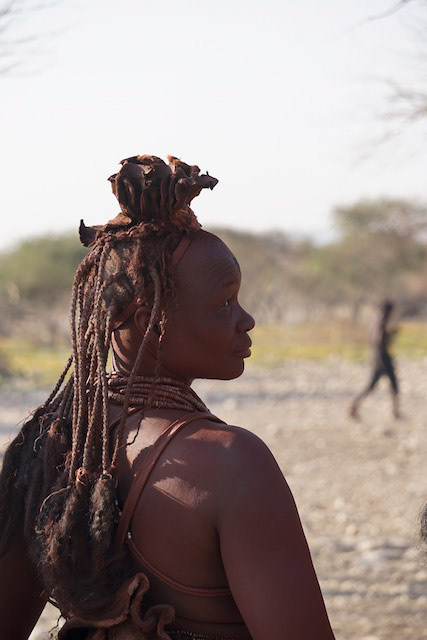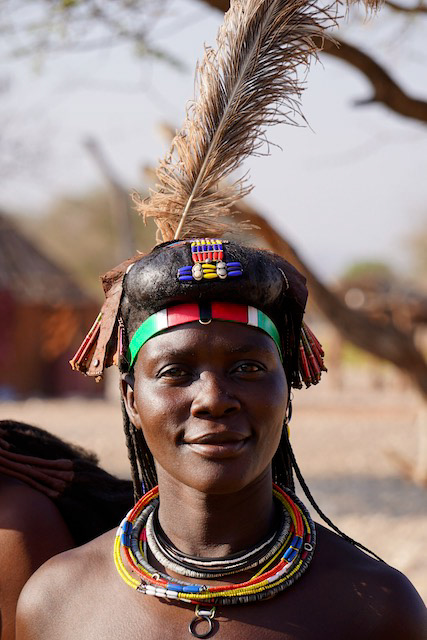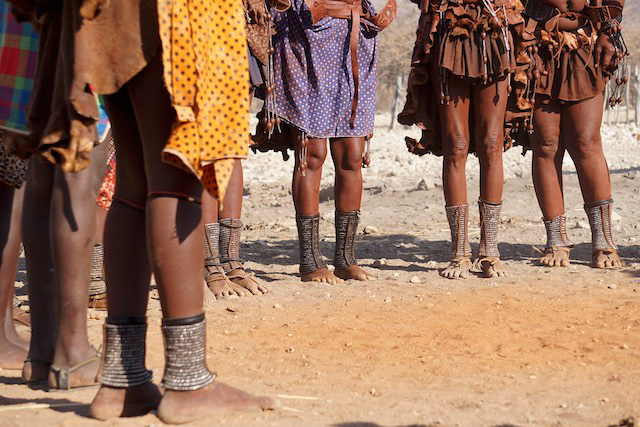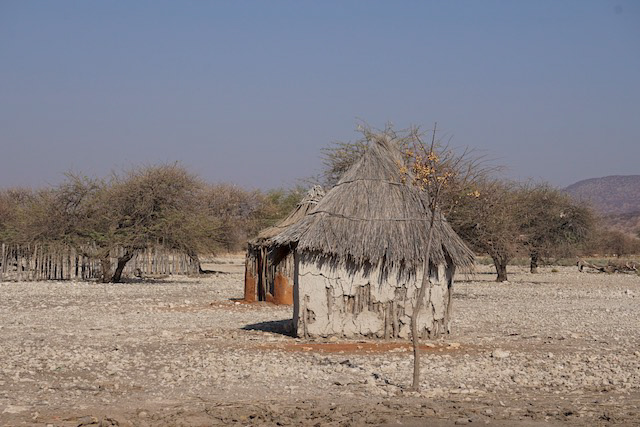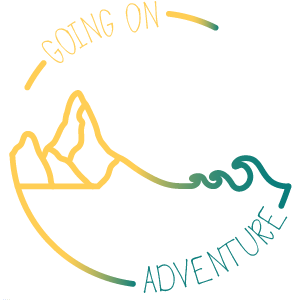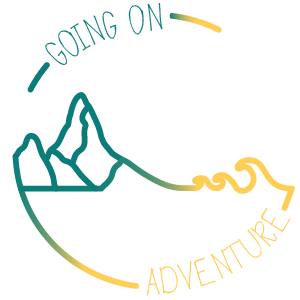If the smell of seals would equal the amount of rain falling, Namibia would be a tropical rainforest. If New York is a city that never sleeps, Opuwo is a town that never sleeps…
So we set out on Wednesday to our next camping spot, forgetting to stop at one of Swakopmund’s famous bakeries for bread… Unlucky me… We went straight to the Cape Cross seal reserve, where you can see, right at the brutal and forceful Atlantic Ocean, well, lots and loads and loads of seals doing whatever seals do best: bark. A lot. Sleep. A lot more. Smell. A whole lot more!
So after this very interesting reserve, we continued our journey towards the Madisa campsite. In a smelly car. Thanks a lot, seals!
After another mixed ride (first part as smooth as a salt road can be, second part as bumpy as a gravel road can be) we arrived at the beautifully located Madisa campsite, nestled on the base of some gigantic and seemingly randomly placed / formed rock formations. We set up our tent quickly in the searing hot dessert sand and went for a refreshing dive in the beautiful circular pool. Around 6 PM we hiked the short path up the rocks to enjoy yet another beautiful sunset, before heading down to prepare our diner on the braai.


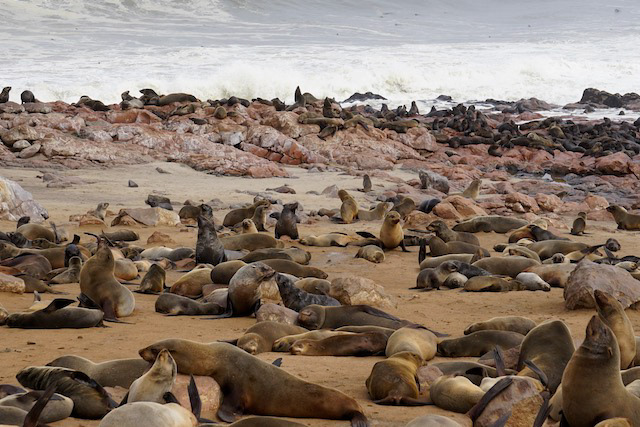

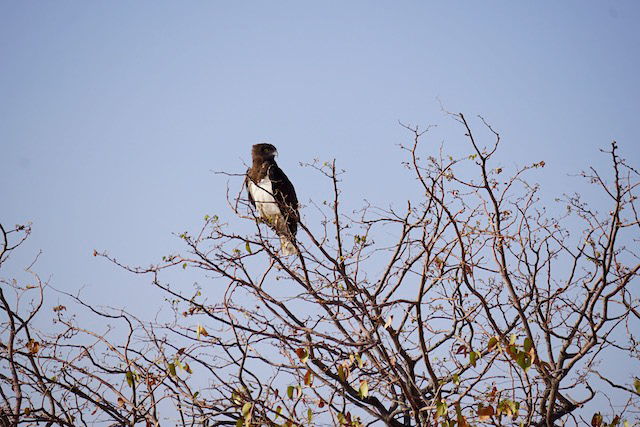
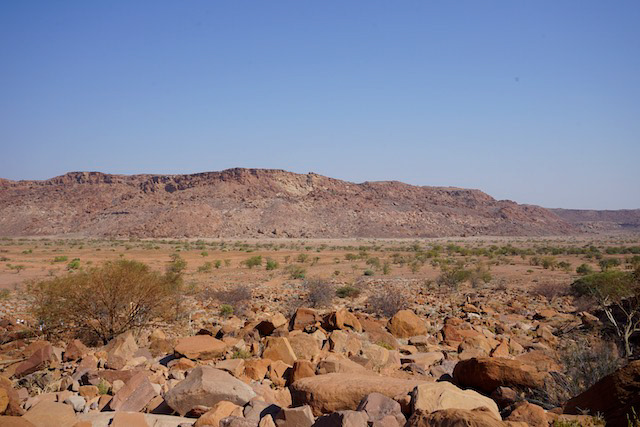
On Thursday two visits were planned to historic sites of national – and apparently also international – importance. Twyfelfontein is not a city, but rather the name given to a spring (fontein in Dutch or South African) by a rather late settler in that area, whom had his doubt about the fountain actually being a fountain or not. Strange story, but anyhow, few decades ago ancient rock engravings were discovered around that same fountain, dating back to the earliest bushmen, making this site an UNESCO world heritage, and with reason.
The second visit was to the petrified forest national park, not world heritage, but still also ancient history of immense trees which succumbed to an enormous land slide and were converted into stone – or at least the looks of stone - by the sheer pressure of the earth it was under.
Both sites have a 100 NAD entrance fee (cash only) with an included and mandatory guided walk, which takes about 1 hour.
We picked up some groceries and much-needed cash from a small settlement, headed back to Madisa, cooled down once more in that same pool and set about another self-cooked meal prepared over firewood.

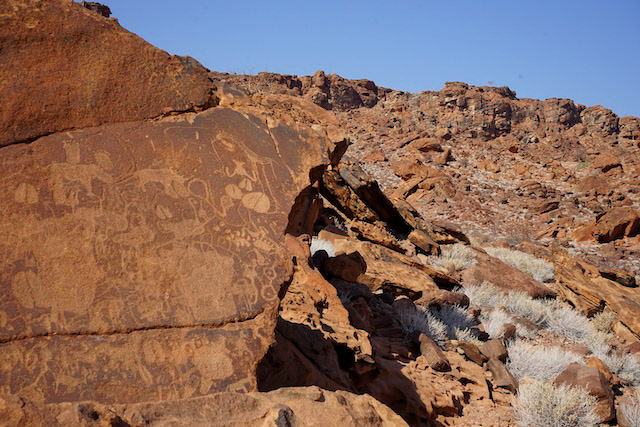




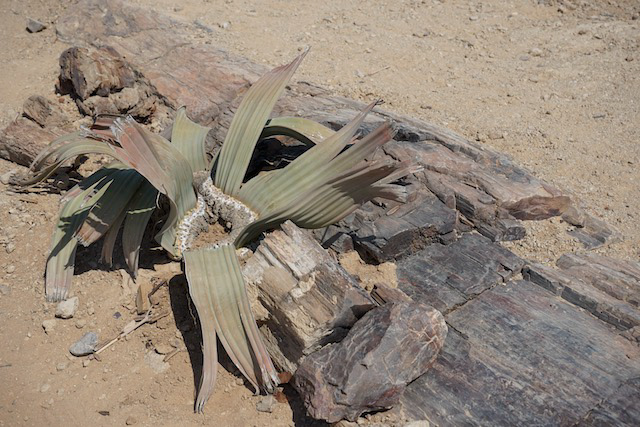
The next two nights we’d be camping at the difficult-to-reach Opuwo Country Lodge, and it would also prove to be our least pleasant experience in Namibia. Lots of noises during night time, source unknown – the town was eerily quiet on Sunday morning 7 AM, feeling completely exposed as what seemed us to be the only white people in town, attracting beggars when we went for groceries and refuelling, a camp site on the other site of the hill of the lodge itself. It was actually the only time we felt that way, all other places we visited were just fine.
However, the diner at the restaurant was really nice and with an infinity pool overlooking the rolling hills around Opuwo, it was also an ideal location for stunning sunsets.
Worth mentioning though is that we visited a Himba tribe on Saturday, learning a bit more about their culture and way of live. Booked through the lodge for 710 NAD, it included transfer and guide / translator. As opposed to the San tribes, Himba’s (and Herero & Zemba) still live largely according their ancestry traditions. Although you see western influences in the younger generation. They don’t dress in a traditional way but wear western clothes. The don’t believe in arranged marriage and want to find their own partner. According to our guide the elder generations accepts these changes witch I found a little bit surprising, I expected more controversy about evolving towards more western ways.
The Himba women tell a lot about themselves through their traditional dressings. The necklaces, the belt, the ankle bracelets: they all have meaning. For instance, a young girl who wears a big, massive one-piece necklace is a girl that still lives at home and will not speak to other people than here own family. An elderly woman who wears multiple thin, simple, brown necklaces means that she had lost a lot of family.
If you look at the ankle bracelets you can see if a girl/woman has children or not and how many. No straight lines on the bracelets means no children. One straight line means one child. Two straight lines means more than one child.
There belt also tells you a bit about being a mother. If the opening of the belt is facing forward, it means that she didn’t had a baby recently. If the opening of the belt is facing backwards, the woman had a baby some two weeks ago.
If you look at Himba woman you immediately see their skin colour that has an orange touch. They make a mixture that they rub on their whole body. It cleans their skin and will protect them against the burning sun and insects.
When you enter a Himba hut, you are welcomed by smoke and fragrances from the Himba mixture. They use the smoke to keep their huts clean and free from unwanted animals, such as snakes. In the hut you’ll find cow skins on which they sleep, and their traditional clothing is hanging on the wall.
They don’t prepare food in the huts, they have one hut reserved in their community where they prepare and store food.
The Himba are also very creative. The make a lot of necklaces and bracelets, an ideal souvenir to remember your visit. And so we returned to our camp site with a new brightly-coloured green/yellow bracelet around Véro’s wrist.
